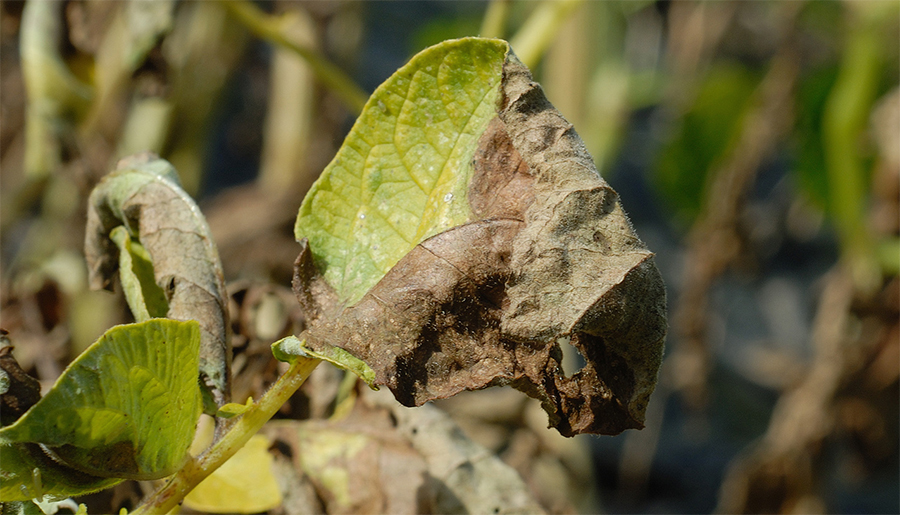
Potato growers and agronomists will be better prepared to cope with more aggressive blight strains this season, with a new BlightCast warning tailored to focus on infections now typically occurring earlier in the season at cooler temperatures.
The new forecasting model has been developed by Syngenta agromet specialists, to more effectively reflect the changing dynamics of today’s blight populations. The highly popular BlightCast five-day blight forecasting service, updated hourly on the Syngenta website and delivered direct to growers by email, will now feature a ‘New Criteria ‘ forecast, alongside a traditional Smith Period forecast.
The ‘New Criteria’ pinpoints forecast temperature to hit over 8°C and more than 11 hours at 90% humidity over two consecutive days to trigger a Blight Period, or a Near Miss where conditions occur for a shorter period. Syngenta Potato Manager, Andrew Curtis, highlighted that leading independent blight researchers are currently assessing these new cooler parameters as the conditions where they believe today’s blight strains may already be active.
“Whilst it is still subject to evaluation and further research, we wanted to make growers easily and quickly aware of these conditions, when hitherto risk was considered low but, in fact, blight may be infecting crops,” he said.
“It will enable them to time sprays more effectively and make better informed decisions on appropriate fungicide choice to prevent infection.”
The existing recognised Smith Period five-day forecast remains the primary information on the BlightCast website, with the secondary ‘New Criteria’ forecast and a five-day spray application window forecast – all based on the grower’s local postcode. “Using these tools in combination, growers can now assess the potential risk facing their crops and alter product choice of spray scheduling accordingly to ensure effective protection is in place,” advised Mr Curtis.
He highlights experiences of agronomists and growers that blight is more active now at lower temperatures, resulting in greater infection pressure earlier in the spring and later in the autumn. “Last year the first signs of foliar blight could be found on volunteers and unprotected crops even before any conventional Smith Periods had been recorded,” he reported. “Clearly blight was active earlier and at lower temperatures that we previously considered.”
He believes that with the high level of volunteers after a relatively mild winter, along with large dumps of potentially blighted tubers from low-value discards, there is an increased risk of early blight infection pressure for the coming season.
“It reinforces the importance of starting the blight programme early, and utilising the most effective blight fungicide, Revus, early in the programme to protect new foliar growth,” advised Mr Curtis. “Having a responsive tool that will flag up potential problems early will ensure all growers are better prepared. It could help to minimise early outbreaks, and reduce overall build-up of blight infection risk across all crops.”
Mr Curtis added that BlightCast now had the capability to continue to evolve and adapt the ‘New Criteria’ forecast in future seasons, in line with the latest thinking on blight population developments.
